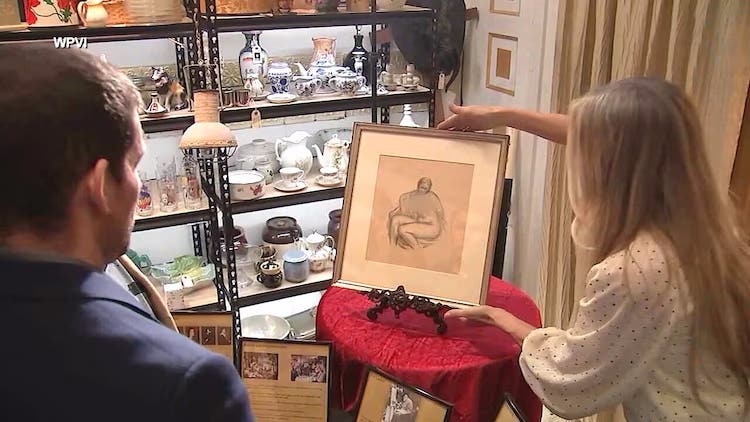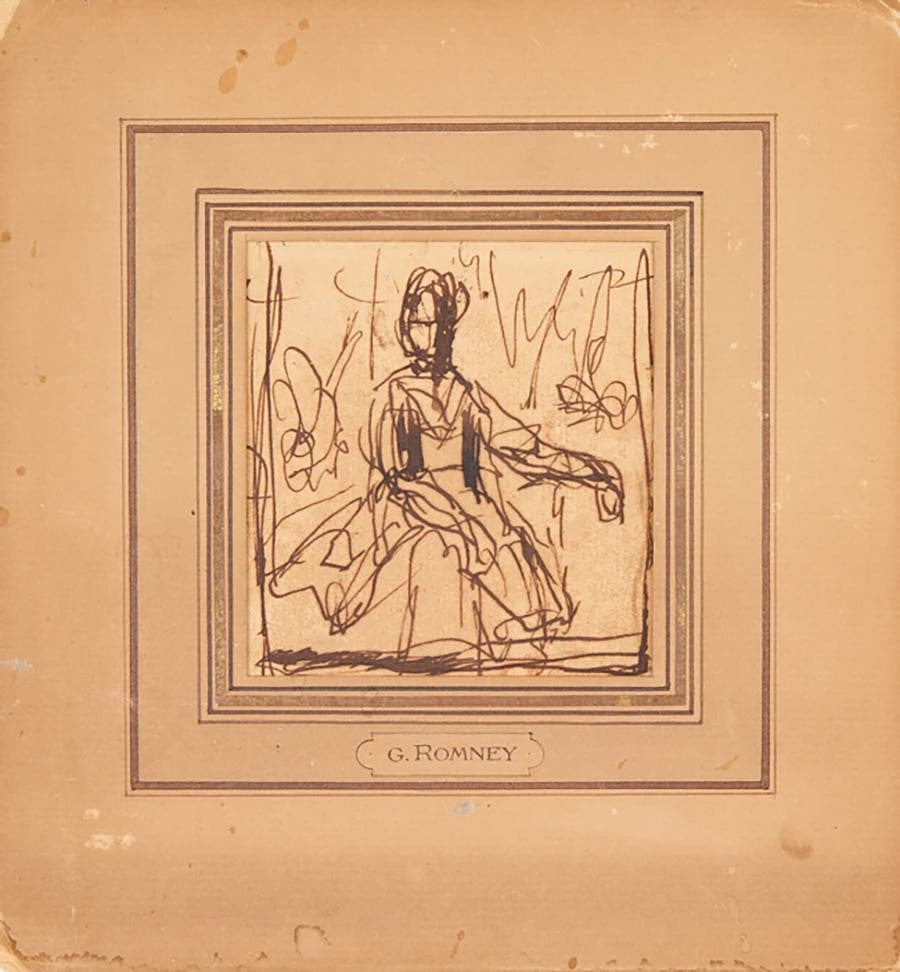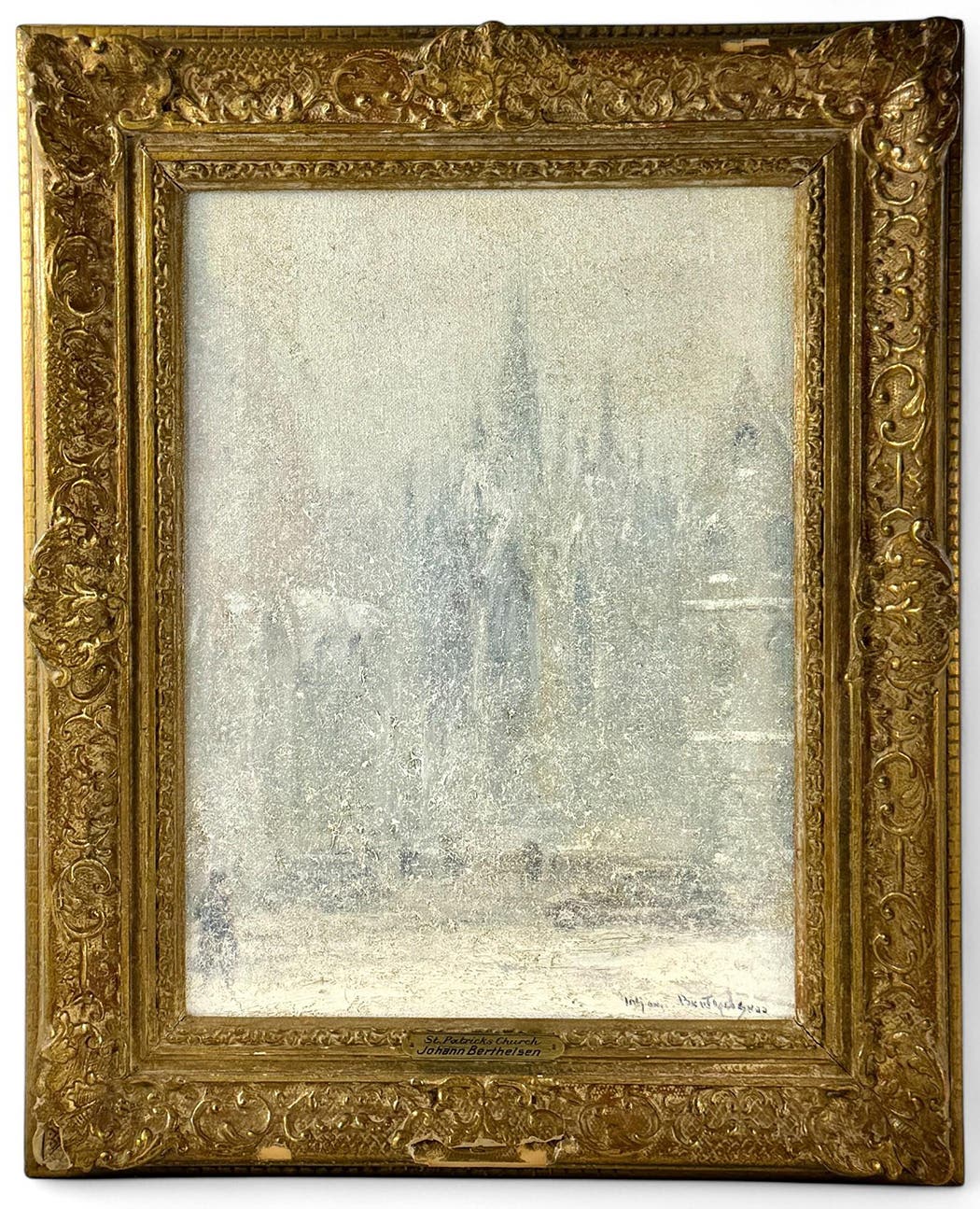‘Theorem work’ art focus of exhibition of Colonial Williamsburg
The ‘theorem work’ technique of stencil painting on fabric, paper and light-colored wood, a popular form of art in 19th century, is on exhibition now through the fall of 2016, at the Art Museums of Colonial Williamsburg.
Williamsburg, VA — The most popular method of watercolor painting practiced in nineteenth-century America was known as “theorem work,” or stencil painting on fabric, paper and light-colored wood; it was used to create decorative pictures and add ornamentation to household objects. Popular in England and Europe as early as 1805, the art form reached popularity in the United States in the 1820s and 1830s. It marked a time of new interest in painting and drawing as essential skills for genteel ladies as well as the temporary decline of needlework as a sign of ladies accomplishment. An exhibition featuring examples of theorem painting is currently on view at the Abby Aldrich Rockefeller Folk Art Museum, one of the Art Museums of Colonial Williamsburg. It will remain on view through September 4, 2017.
“We are pleased to have this opportunity to showcase some of our favorite theorems from Colonial Williamsburg’s collection. Folk art enthusiasts have long-associated the art of stencil with nineteenth century collections and we’re excited to share this important and vibrant form of American art with the public,” said Laura Pass Barry, Colonial Williamsburg’s Juli Grainger curator of paintings, drawings, and sculpture and manager for curatorial outreach. “This exhibit will not only depict a variety of theorem compositions and subjects, but it will also show the period process which artists, school girls, and everyday men and women followed to create these colorful creations making them today one of the country’s most recognized and celebrated folk art traditions.”
Among the most popular designs of theorems during the second quarter of the 19th century were those known as “The Full Basket” and “Fruit, Bird and Butterfly,” judging by the number of the works that survived. More than 25 examples of the latter design have been recorded suggesting that the instructions for executing this design were likely printed and distributed widely through retail stores or women’s magazines. Similarly, many stencil paintings using “The Full Basket” pattern have survived, including six in the Colonial Williamsburg collection. The only signed example known is an 1828 piece by Eliza Ann Parker of Southborough, Massachusetts, which appears in Color & Shape: 19th Century Theorems. The mention of her hometown within Miss Parker’s signature gives this group its geographical attribution of Massachusetts.
Another rare example of theorem work featured in the exhibition is Still Life with Watermelon by William Stearns (New England, 1830-1840). It is one of only a few theorems known to have been made by a man, clearly proving that painting on velvet was not a pastime limited to school girls. (The National Gallery of Art in Washington, D.C. also has a theorem bearing the name William Stearns stamped along the bottom of the composition.)
Yet another example of theorem painting in the exhibition is the masterful work Basket of Fruit by Mary Bradley of Lee, Massachusetts, circa 1825. The expert shading of leaves and fruit on this work painted on cotton velvet gives this composition a strong three-dimensional quality that is often lacking in less skillfully created stencil works. The artist had perfected her use of stencils, as indicated by the crisp edges of the leaves and the well-defined forms of the cherries and cherry stems. The sharp outlines of the fruit and basket were accentuated by depressions in the velvet, as if she had traced the edges of some of the shapes with a sharp tool.
Four of the eleven works to be on view in Color & Shape: 19th Century Theorems were once owned by Abby Aldrich Rockefeller, for whom the folk art museum in Colonial Williamsburg is named. Mrs. Rockefeller began amassing her collection in the genre in the late 1920s, a time when few people recognized these works were more than a hobby for the untrained or amateur artists who made them. Guided by early scholars and collectors of folk art, her collected works grew over the next decade to more than 400 pieces, more than half of which later became the basis of the museum. Many of those works were American theorem paintings. (Many other pieces in her collection are on view in Bassett Hall, the Rockefeller home in Colonial Williamsburg,)
“Theorem paintings form an excellent bridge between Abby’s interests in early American and modern art. The use of stencils provides for bold colors, patterns and shapes that offer an exciting link between the theorem paintings completed by young ladies and the avant-garde pieces created by modern artists almost a century later,” said Kate Teiken, assistant curator of prints, maps and paintings.
For more information, visit www.colonialwilliamsburg.com/do/art-museums, or call 757-220-7724.








